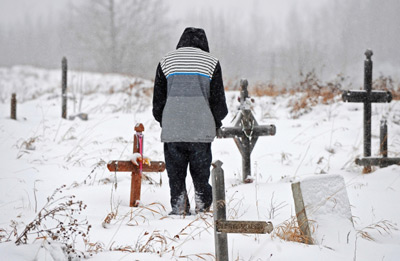2014 Canadian Hillman Prize Winner

This project started in 2009 with a single question: How many children have died in provincial care? It was a question Alberta journalists had been asking for more than a decade, and one the province would never answer. Government reports did not match up with newspaper archives; the medical examiner’s office refused to provide any numbers.
 After an Access to Information request, a long negotiation, and an appeal, the four-year legal battle ended in victory in June 2013, when Alberta’s Office of the Information and Privacy Commissioner ruled the need for public scrutiny outweighed some privacy protections, and the adjudicator released all of the basic information sought. In September 2013, the province released 3,000 pages of death records, one for every Alberta child who had died while in foster care between 1999 and 2013.
After an Access to Information request, a long negotiation, and an appeal, the four-year legal battle ended in victory in June 2013, when Alberta’s Office of the Information and Privacy Commissioner ruled the need for public scrutiny outweighed some privacy protections, and the adjudicator released all of the basic information sought. In September 2013, the province released 3,000 pages of death records, one for every Alberta child who had died while in foster care between 1999 and 2013.
Kleiss painstakingly built a comprehensive database that documented for the first time the deaths of these children. Henton and Kleiss combed through the database, extracting key details, cross-referencing the death records with lawsuits, news stories and trial records, as well as fatality inquiry reports, which were also released after a fight with the government. The project revealed trends the government had never identified before, such as the fact that the vast majority of these children were aboriginal; that one in three who died in care were infants, and that one third of them were dying in their beds. They discovered that over the last 14 years, 145 children had died in provincial care—nearly triple the 56 deaths reported to the public or to our elected officials. At least one of those “hidden” children was murdered. Their research revealed a byzantine system accountable to no one, which fails to identify or investigate trends. It doesn’t even follow through on its own recommendations to prevent similar deaths.
The series forever changed Alberta’s policy on death records, opening up the system, by law, to public scrutiny. Since the series was published, Alberta has changed its policy on death records and held a two-day roundtable on child welfare reform. The Human Services Minister has vowed to lift the province’s publication ban with a legal amendment this spring. This well-documented series shone a spotlight on a very dark room where the most vulnerable in the province were left on their own. While the investigation is unfinished, Fatal Care kicked open a door that had been locked because too many people in power felt that it better served their interests to keep this information secret, with no regard to the interests of the victims. The Hillman Prize celebrates journalism that challenges this view - and tries to give genuine voice to the voiceless. These Alberta journalists have made sure that these children’s short, difficult lives are acknowledged, that their suffering is not hidden from view, and that proper public scrutiny of the care they receive is now possible.
Karen Kleiss has covered crime and courts for the Edmonton Journal and currently works as the newspaper’s political reporter. She has investigated dirty restaurants, domestic violence in Aboriginal communities and the abuse of Alberta’s taxpayer-funded air service; she has also traveled to Africa to tell the story of a local woman who gambled everything she had in a failed bid to establish a primary school in one of the poorest countries in the world.
Darcy Henton is a veteran Edmonton-based political affairs writer who covers the Alberta Legislature for the Calgary Herald. He is the co-author of two non-fiction crime books: No Kill, No Thrill, about a Mountie who helped convict California serial killer Charles Ng; and Boys Don’t Cry, about one of Canada’s largest sex abuse scandals involving Christian Brothers and the Catholic Church. He has reported for various Canadian news agencies, including the Toronto Star, Edmonton Journal, Edmonton Sun and The Canadian Press. For various assignments during his 35-year career, he has worked as a prison guard, forest firefighter and taxi driver, trained as a soldier and been locked up as a patient in a maximum-security facility for the criminally insane. (He insists he is better now.) When he is not at his keyboard or spending time with his family, he is often thundering across the West on his Harley.

